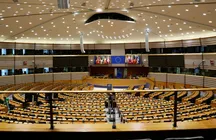Expected Impact:
The outcome should contribute to:
- the emergence of a consolidated EU perspective for U-CCA systems in EU Member States and EDF Associated Countries and for the EDTIB;
- reduce dependencies on non-European suppliers by boosting the EDTIB and promoting the development of a European solution;
- more effective multi-role and networked operations, including MUM-T, collaborative operations in spectrum-constrained environments and swarming formation;
- improvement of the degree of autonomy of unmanned systems, while still allowing humans to take control whenever needed;
- increase operational capability by identifying new concepts and options for dispersed basing of U-CCAs;
- the identification of potential "quick-wins" in the context of U-CCA solutions;
- the generation of prerequisites and inputs for the long-term development of future EU/NATO U-CCA perspective, with a view to reduce the fragmentation in EU UAS fleets;
- air combat solutions able to reduce the exposure of risk to humans, with a more precise effectiveness to reduce the collateral effects;
- the interoperability between EU armed forces and with NATO Allies.
It is an overarching challenge for the EU and EDF Associated Countries to develop a consolidated common perspective on the long-term applications, requirements, solution concepts and technology needs for an advanced EU Unmanned Collaborative Combat Aircraft (U-CCA) system to support the 5th and 6th generation fighter in
...




